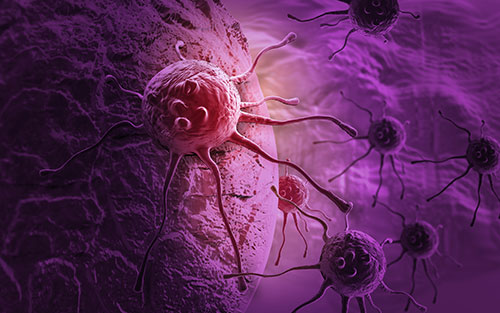How Does Skin Cancer Start?
Having had one or more blistering sunburns as a child or teenager increases your risk of developing skin cancer as an adult. Anyone, regardless of skin color, can get skin cancer. However, having less pigment in your skin provides less protection from damaging UV radiation. If you have blond or red hair and light-colored eyes, and you freckle or sunburn easily, you’re much more likely to develop skin cancer than is a person with darker skin. Skin cancer develops primarily on areas of sun-exposed skin, including the scalp, face, lips, ears, neck, chest, arms and hands, and on the legs in women. But it can also form on areas that rarely see the light of day — your palms, beneath your fingernails or toenails, and your genital area.
- During an average interval of 57 days, 36 percent of tumors did not change in size, while 64 percent grew.
- Skin cancer is the abnormal growth of skin cells.
- All kinds of skin can utilize Lilyana Naturals Face Lotion, including oily, fragile, acne-prone, as well as mix skin.
- However, having less pigment in your skin provides less protection from damaging UV radiation.
- Or it may have areas that appear to have lost color.
- People who work outdoors, regularly use tanning beds or sunbathe frequently are more prone to skin cancer, especially those who aren’t using a sunscreen lotion.
Diagnosing melanoma as early as possible is critical for treatment and recovery. And if it all turns out fine, you will have peace of mind. Yearly skin checks, especially if you have a lot of skin moles or risk factors for skin cancer, may be a good idea. Being exposed to UV light from the sun increases your risk of squamous cell carcinoma of the skin. Spending lots of time in the sun — particularly if you don’t cover your skin with clothing or sunblock — increases your risk of squamous cell carcinoma of the skin even more.
Small pieces of tissue are taken out and checked in a lab for cancer cells. The lower the number, the less the cancer has spread. A higher number, like stage 4, means a more serious cancer that has spread beyond the skin. Be sure to ask the doctor about the cancer stage and what it means for you. If you have skin cancer, the doctor will want to find out how far it has spread.
States with the Highest Skin Cancer Rates
We’ll deliver the latest news and information you need to know every weekday morning. The companies said the combination reduced the risk of recurrence or death by 44% compared with Keytruda alone. Patients received up to nine doses of the vaccine. After undergoing surgery, one group of patients was treated with a combination of Moderna’s vaccine and Keytruda, while another group received only Keytruda. “Certain textiles offer even better protection than various sun creams,” he noted. Manuel Neuer raised awareness of the disease back in November.
They may also act as skin moisturizers to reduce the risk of dryness and skin damage. Moderna and Merck plan to start a Phase 3 trial for the melanoma vaccine sometime in 2023, according to the news release. In 2019, Florida had an age-adjusted rate of 24.5 new melanoma cases per 100,000 people, according to federal health officials. Jerseys and training pants that have been tested and bear a seal of approval are best.
What should you do if you notice potential signs of skin cancer?
However, if left untreated, some lesions can develop into skin cancer, which is why it is good to know what these potentially early skin cancer signs look like. Your doctor can tell you more about the type you have. For melanoma, treatment will largely depend on the stage and location of the cancerous growth. However, other factors may also determine what type of treatment is used.
One cause of skin cancer that is clear is exposure to sunlight . The ultraviolet rays in sunlight and tanning beds can cause extensive damage to the DNA in skin cells. In turn, these damaged cells may someday become cancerous. Harmful UV radiation can occur relatively soon before the appearance of skin cancer, but it can also pre-date a cancer diagnosis by many years. Most basal cell and squamous cell cancers can be cured with surgery or other types of treatments that affect only the spot on the skin. It may sound absurd, but if you spend time sunbathing or in tanning beds, that’s exactly what you’re doing.
While these remedies may or may not work, they are not harmful, and some may be beneficial for your skin health. After the procedure, your doctor can send the removed skin mole to be checked for skin cancer. Although the 36-year-old national team goalkeeper has since been cured, he has to undergo examinations every six months.
We are open and ready to help you regain healthy skin that positively glows with a youthful look. It may be the same color as your skin, or it may be light, dark, tan, pink, red or a combination of colors. Depending on how much needs to be removed, surgery is usually a fairly quick procedure.
Merkel cell carcinoma causes firm,
shiny nodules that occur on the surface or just beneath the skin and in hair follicles. Merkel cell carcinoma most often appears on the head, neck and torso. Sometimes people go right to a plastic surgeon when they have something on their face, Dr. Lee explains. But skin cancer can grow wider than anticipated, making complete removal tricky. Lymphoma of the skin is an uncommon type of white blood cell cancer. Tell the healthcare provider if your child has had skin cancer in the past, and if other your family members have had skin cancer.
At Walk-in Dermatology, patients can see a board-certified dermatologist seven days a week. Our dermatologists will evaluate your skin and answer all your questions. We will work with you to set up a treatment plan to address your skin condition and get at the root of your issue – all convenient to your schedule. The good news is, we’ve taken the stress out of seeing a dermatologist. You don’t have to look far for excellent dermatology services. These are rough or scaly red or brown patches on the skin.
The vast majority of skin cancer deaths are caused by melanoma, the American Academy of Dermatology reports. Melanoma develops in cells called melanocytes that create the pigment that gives your skin its color. Melanoma only makes up about 1 percent of skin cancers but causes most skin cancer deaths.
Basal cell carcinoma usually occurs in sun-exposed areas of your body, such as your neck or face. You may also apply frankincense essential oil directly on a skin mole. Over time, it may make the skin mole to blacken and then fall off. You may use frankincense essential oil for a few days after the mole has fallen off to prevent any scarring. Shaving; This method allows your doctor to shave off a non-cancerous skin mole with a surgical blade from your skin’s surface.
Like other types of cancer, skin cancer is easiest to treat if caught early. If you have atypical moles, it is good to map them and keep an eye on them. You have a higher risk of developing melanoma if you have more than four atypical moles. Due to their rough texture and depending on their location on the body, actinic keratosis may be felt before being seen. Biological therapies are treatments using substances made naturally by the body. Some of these treatments are called immunotherapy because they help the immune system fight the cancer, or they occur naturally as part of the immune system.
These medical reviewers confirm
the content is thorough and accurate, reflecting the latest evidence-based research. Content is reviewed before publication and upon substantial updates. Donate to the American Cancer Society today to ensure no cancer journey–from prevention to survivorship–has to be walked alone. American Cancer Society medical information is copyrighted material. For reprint requests, please see our Content Usage Policy.
It was found that growth varied significantly based on the estrogen receptor status of the breast tumors. An easier way to envision how fast a breast cancer grows is by looking at the growth rate or volume doubling time. Tumor doubling time is the period of time that it takes for the tumor to double in size. High levels of UV radiation have also been linked to harmful effects on the immune system. Mutations can happen by chance when a cell is dividing.
Healthline has strict sourcing guidelines and relies on peer-reviewed studies, academic research institutions, and medical associations. You can learn more about how we ensure our content is accurate and current by reading our editorial policy. Thank you for taking the time to confirm your preferences. If you need to go back and make any changes, you can always do so by going to our Privacy Policy page. Some companies also sell photoprotective clothing.
Enk sees the fact that Neuer went public with his experiences with skin cancer as as stroke of luck in efforts to raise awareness of the dangers. Educational campaigns supported by the government and professional associations have failed to produce the desired effect. According to statistics from German health insurance companies, the incidences of skin cancer rose by 91% between the years 2010 and 2020. Tell your dermatologist about all medications you take. Some medicines can increase the skin’s sensitivity to sunlight, including varieties of antibiotics.
Castor Oil and Baking Soda for Skin Moles
Or it may have areas that appear to have lost color. Being aware of your skin is probably the single most important thing you can do when it comes to detecting skin cancer symptoms early . The lesions are usually small, about an eighth of an inch to a quarter of an inch in size. Cherry angiomas are common skin growths that can grow on most areas of your body. They are also known as senile angiomas or Campbell de Morgan spots. How dermatology is failing melanoma patients with skin of color.
If you have a history of abnormal moles, watch them regularly for changes. Anyone who spends considerable time in the sun may develop skin cancer, especially if the skin isn’t protected by sunscreen or clothing. Tanning, including exposure to tanning lamps and beds, also puts you at risk. A tan is your skin’s injury response to excessive UV radiation.
For example, in tennis, where top players like Angelique Kerber spend hours on an outside court. Kerber suffers from sun-related hyperpigmentation and is intensively exposed to dangerous UV radiation due to her profession. This also affects sailors, cyclists, runners and footballers like Manuel Neuer. Participating in sports, whether as a professional or recreational athlete, causes the body to release protective substances. These endogenous antioxidants intercept carcinogenic substances known as free radicals and form a protective barrier that can shield genetic material from intruders.
If it stays in the body long enough, it can cause anal, cervical, oropharynx, penile, vulvar and vaginal cancers, according to the Centers for Disease Control and Prevention. Researchers can test to see if it’s successful against other forms of cancer, said Hwu, a tumor immunologist. Moderna and Merck didn’t release the trial data and the results weren’t published in a peer-reviewed journal.
Cells begin to multiply and grow out of control, eventually forming a cancerous mass. Surgery is the main type of treatment for most skin cancers. The type that’s best for you depends on the kind of skin cancer, how big it is, and where it is. Ask your doctor what kind of surgery you will have and what to expect.
Apply sunscreen generously
Apply sunscreen generously, and reapply every two hours — or more often if you’re swimming or perspiring. Use a generous amount of sunscreen on all exposed skin, including your lips, the tips of your ears, and the backs of your hands and neck. Make an appointment with your doctor if you notice any changes to your skin that worry you.
Being alert for changes to your skin may help you get a diagnosis earlier. Skin cancer is by far the most common type of cancer. Nearly all skin cancers can be treated effectively if they are found early, so knowing what to look for is important. Clinical trials are research studies that test new drugs or other treatments in people. They compare standard treatments with others that may be better. Clinical trials are one way to get the newest cancer treatment.
American Academy of Dermatology Association.5 facts you should know about pre-cancerous skin growths. Early skin cancer can be challenging to recognize. Symptoms can be very subtle, such as a dry patch developing on your lip or ear. A 2019 study estimated doubling time by looking at serial ultrasounds between diagnosis and surgery.
Melanocytes
which produce melanin, the pigment that gives skin its normal color — are located in the lower part of your epidermis. Melanocytes produce more melanin when you’re in the sun to help protect the deeper layers of your skin. Other people with an increased risk of Kaposi sarcoma include young men living in Africa or older men of Italian or Eastern European Jewish heritage.
A lymph node biopsy may be performed to see if it has spread to nearby lymph nodes. Your doctor will examine the area of concern and ask you about your family history, medical history, and sun exposure. If they suspect skin cancer, they’ll refer you to a dermatologist. If you notice any unusual moles, spots, or marks on your skin, it’s important to visit a doctor.
He or she will talk with you about other tests that may be needed if cancer is found. Melanoma can spread to other parts of your body, including your lymph nodes, brain, liver, and lungs. Your symptoms can give clues to where the cancer has spread. Superficial non-melanoma skin cancers can be treated with scraping and burning. This process is called curettage and electrodessication.
The growth may have the appearance of a wart, crusty spot, ulcer, mole or sore. Sometimes the first sign of melanoma or squamous cell cancer is an enlarged lymph node. For example, Merkel Cell carcinoma is far more rare than melanoma, but it is also far more aggressive. If a spot is growing, changing, itching, or bleeding, or if a spot appeared to be a pimple, but it has been over 2-3 weeks and it is not resolving, it should be evaluated. Basal and squamous cell skin cancers are the most common types of skin cancer. They start in the top layer of skin , and are often related to sun exposure.
Basal cell carcinoma
Basal cell carcinoma is a type of skin cancer that most often develops on areas of skin exposed to the sun, such as the face. On white skin, basal cell carcinoma often looks like a bump that’s skin-colored or pink. On a more scientific level, it’s important to note that skin cancer starts in your skin’s top layer, the epidermis. The epidermis includes squamous cells, which compose the skin’s inner lining, basal cells, which produce new skin cells, and melanocytes, which produce the skin’s colors.
This is most likely due to the immunosuppressive medications that are needed to prevent organ rejection. Basal cell carcinoma typically develops on parts of your body exposed to sunlight but also occasionally occurs in other places. It is best to use a full-length mirror when checking your skin for changes or early signs of skin cancer. Observe your body in the mirror from all angles—front, back, and on each side. People with naturally very dark skin still need to take care in the sun even though they may rarely, if ever, get sunburnt.





